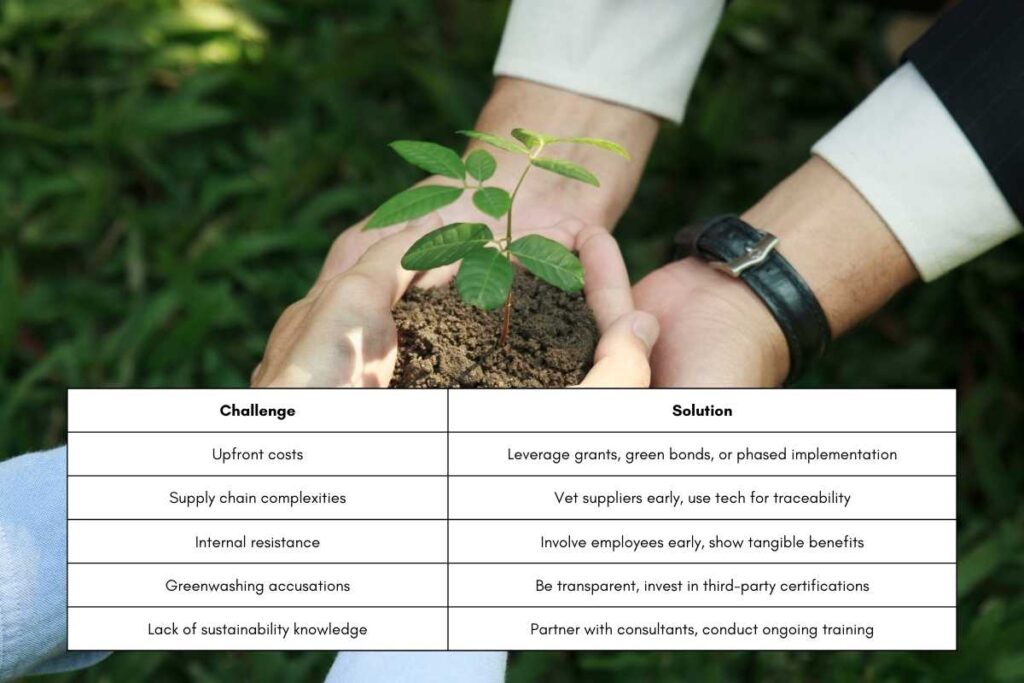The New Business Imperative
In an era defined by climate change, resource scarcity, and conscious consumerism, “business as usual” no longer cuts it. A growing wave of entrepreneurs, executives, and investors is embracing a powerful idea: sustainability isn’t just an ethical responsibility, it’s a business opportunity.
The modern marketplace rewards companies that go green. From reducing waste and energy consumption to launching eco-friendly products and reshaping supply chains, sustainable practices are proving to be powerful drivers of growth, innovation, and brand loyalty. More importantly, they offer a clear path to aligning profit with purpose.
Welcome to the age of the green business revolution, where doing good for the planet also means doing well in the market.
This article explores proven green business strategies that not only protect the environment but also drive profitability, stakeholder trust, and long-term success.
I. Why Green Business is Good Business
Gone are the days when sustainability was viewed as a cost center. Today, it’s a competitive advantage.
1. Consumer Expectations Are Changing
- According to IBM, 57% of consumers are willing to change their purchasing habits to reduce environmental impact.
- Millennials and Gen Z increasingly choose brands that reflect their values.
2. Cost Savings Through Efficiency
- Energy-efficient buildings and processes reduce utility bills.
- Lean, waste-reduction strategies optimize operations and cut costs.
3. Investor and Shareholder Pressure
- ESG (Environmental, Social, Governance) investing is now mainstream. Assets in ESG funds topped $40 trillion globally in 2023.
- Public companies with green strategies enjoy higher valuations and investor trust.
4. Regulatory Compliance and Incentives
- Governments worldwide are introducing stricter environmental regulations and offering tax credits, grants, and subsidies to green businesses.
II. Core Green Business Strategies That Deliver Results
1. Sustainable Supply Chain Management
Your supply chain speaks volumes about your environmental impact. Companies are now taking a holistic approach to make sourcing, production, and logistics greener.

Key Actions:
- Source raw materials from certified sustainable vendors.
- Minimize transportation emissions through local sourcing.
- Require suppliers to meet environmental standards (e.g., ISO 14001).
- Embrace circular supply chains where waste from one process feeds another.
Case Example:
Patagonia ensures environmental and social responsibility throughout its supply chain, earning customer loyalty and reducing reputational risks.
2. Green Product Innovation
Creating sustainable products isn’t just good for the environment, it can also spark market differentiation and open up new revenue streams.
Ideas for Product Innovation:
- Use biodegradable or recycled materials.
- Design for durability and repairability.
- Offer product take-back or recycling programs.
- Innovate packaging (e.g., compostable, plastic-free, minimalistic).
Case Example:
Unilever’s “Love Beauty and Planet” line is built entirely around sustainability, from packaging to ingredients, boosting sales among eco-conscious consumers.
3. Energy Efficiency and Renewable Power
Energy represents a major operating expense and a significant portion of a company’s carbon footprint.
Strategies for Greening Energy Use:
- Switch to LED lighting and energy-efficient HVAC systems.
- Install smart energy management systems to track usage.
- Invest in onsite renewable energy (e.g., solar panels).
- Purchase green energy credits or join community solar programs.
ROI Bonus:
Businesses that reduce energy usage can expect 10–30% in savings, with a relatively quick payback period.
4. Waste Reduction and Circular Economy Models
The shift from a linear to a circular economy, where waste is minimized and materials are reused, is reshaping product development and operations.
Circular Economy Tactics:
- Upcycle or recycle manufacturing waste.
- Create reuse programs (e.g., reusable packaging, refill stations).
- Design closed-loop systems that regenerate materials.
Case Example:
Loop, a reuse-focused platform, partners with brands like Nestlé and P&G to deliver products in reusable containers and reclaim them post-use.
5. Green Certifications and Transparent Reporting
Certifications provide credibility, while reporting builds stakeholder trust.
Common Certifications:
- B Corp Certification
- LEED (Leadership in Energy and Environmental Design)
- Energy Star
- Fair Trade Certified
- Cradle to Cradle

Transparency Tools:
- Annual sustainability reports
- Carbon footprint calculators and disclosures
- Public ESG benchmarks
These tools help attract conscious consumers, top talent, and investors.
6. Employee Engagement in Sustainability
Empowering your workforce is key to making sustainability stick.
Ideas to Involve Employees:
- Green committees or sustainability task forces
- “Green Challenges” (e.g., energy-saving weeks, zero-waste days)
- Volunteer programs focused on environmental impact
- Internal training on climate change and sustainable practices
Impact:
Companies with engaged employees report 21% higher profitability, according to Gallup—and green purpose is a powerful motivator.
7. Sustainable Finance and Ethical Investing
Businesses are rethinking how they manage and deploy capital.
Finance-Driven Green Strategies:
- Issue green bonds to fund sustainable projects.
- Bank with institutions that support clean energy and community investment.
- Create ESG-focused investment portfolios.
Case Example:
Apple issued $4.7 billion in green bonds to finance energy efficiency and clean energy efforts globally.
8. Digital Tools and Smart Technology for Sustainability
Technology is amplifying green strategies through precision and scale.
Examples of Green Tech Use:
- IoT sensors to track energy and water use in real-time
- AI-powered supply chain optimization to reduce emissions
- Blockchain for ethical sourcing and carbon offset tracking
Case Example:
Google uses AI to optimize cooling systems in its data centers, cutting energy use by 30%.
III. Building a Green Brand: Communicating with Authenticity
Going green is only half the battle, communicating your sustainability initiatives with authenticity is key.
Effective Green Messaging Tips:
- Be transparent, report both progress and challenges.
- Avoid greenwashing, don’t exaggerate claims.
- Highlight specific data (e.g., “We’ve reduced emissions by 40% in two years”).
- Share customer impact stories and testimonials.
- Align messaging with action; your values should reflect in products, people, and processes.
Why It Matters:
A Nielsen study shows 73% of millennials are willing to pay more for sustainable brands, but only if they trust them.
IV. The ROI of Sustainability: What the Numbers Say
Still skeptical that going green drives profitability? Let’s look at the data:
- McKinsey & Company reports that companies with strong ESG credentials outperform peers in both stock price and profitability.
- The Harvard Business Review found that firms focused on sustainability experience lower capital costs and greater operational efficiency.
- According to the Carbon Disclosure Project (CDP), companies actively managing carbon emissions see 18% higher returns on investment than those that don’t.
Green strategies are smart strategies, not just for the planet, but for the bottom line.
V. Challenges and How to Overcome Them
While the benefits are clear, transitioning to green business models can pose challenges:

| Challenge | Solution |
| Upfront costs | Leverage grants, green bonds, or phased implementation |
| Supply chain complexities | Vet suppliers early, use tech for traceability |
| Internal resistance | Involve employees early, show tangible benefits |
| Greenwashing accusations | Be transparent, invest in third-party certifications |
| Lack of sustainability knowledge | Partner with consultants, conduct ongoing training |
VI. A Future Powered by Green Enterprise
The next generation of business leaders isn’t asking if sustainability is important; they’re asking how fast they can implement it.
Tomorrow’s companies will be judged not just by what they produce, but by how they produce it. Consumers will support brands that tread lightly. Investors will bet on companies that think long-term. Employees will stay loyal to employers whose values match their own.
And the planet? It might just have a fighting chance.
Conclusion: Purpose-Driven, Profit-Focused, Planet-Conscious
The narrative is shifting. No longer must businesses choose between doing well and doing good.
Today, green business strategies allow us to design products that delight, build supply chains that sustain, and craft operations that conserve, all while generating lasting value for shareholders and society alike.
Profit and purpose are no longer in conflict. They may be the most powerful partnership of our time.
So to every entrepreneur, executive, and changemaker out there:
Green means go. Let’s build the future, cleaner, smarter, and stronger.

